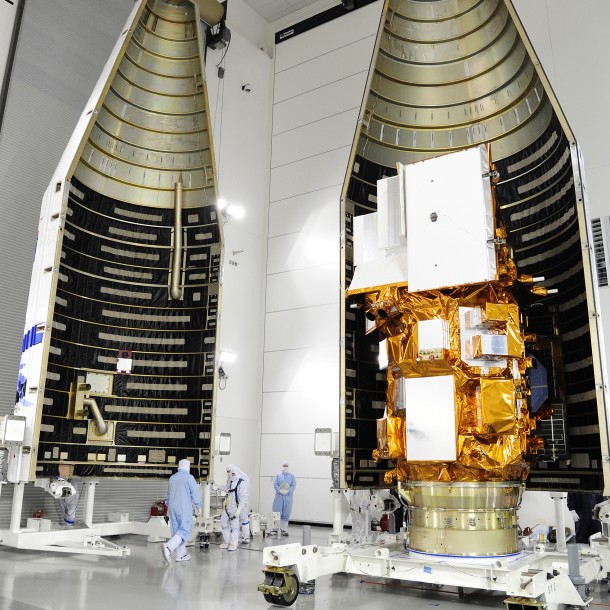
A baby Adélie penguin nuzzles up to its mother inside one of three bird colonies on Ross Island near Antarctica. (Penguinscience.com)

This is Robonaut 2-R2, the first dexterous humanoid robot in space, in an image taken inside the International Space Station. NASA astronaut Kevin Ford’s reflection can be seen on R2′s helmet visor. (NASA)

Photo illustration of the magnificent spiral galaxy M106, assembled using data from the Hubble Space Telescope. (NASA)

This photograph, taken through a microscope, is of a brown fat cell (brown adipocyte) taken from a muscle stem cell. (Alessandra Pasut, Ottawa Hospital Research Institute)

Technicians prepare NASA’s Landsat Data Continuity Mission (LDCM) satellite for its scheduled launch on Monday, Feb. 11 at 1800 UTC. (NASA)

Sockeye salmon migrate from salt water to fresh water in British Columbia’s Fraser River, changing from their silvery ocean colors to red in fresh water. (Tom Quinn, University of Washington)





 Science World is VOA’s on-air and online magazine covering science, health, technology and the environment.
Science World is VOA’s on-air and online magazine covering science, health, technology and the environment.